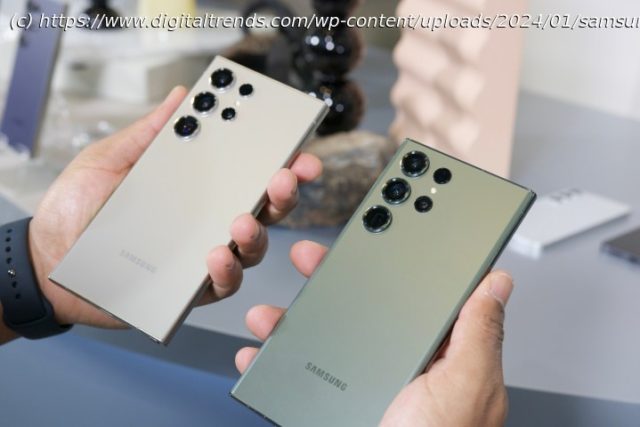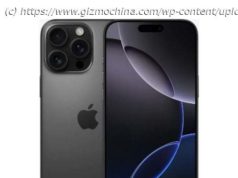The Samsung Galaxy S24 Ultra raises the bar for flagship phones with superior hardware and AI features. Here’s how it compares to the Galaxy S23 Ultra.
The premium Android space does not suffer from a lack of options. There are plenty of good flagships with excellent performance, bright and visually enticing screens, glamorous designs, and cameras that trick you into thinking they are as good as DSLRs. The Galaxy S series ticks most of those boxes, and the new Galaxy S24 Ultra doesn’t waver from the expectations set by its ancestors.
With AI being the keyphrase of the Samsung Unpacked event this year, the S24 Ultra is gaining significant improvements in ways we can interact with phones. In many ways, the Galaxy S24 Ultra will lead as one of the most compelling and feature-rich Android phones of 2024. But is it enough to tempt owners of the Galaxy S23 Ultra to upgrade?
If you are curious about the improvements the Galaxy S24 Ultra brings over last year’s S23 Ultra, here’s everything you need to know.Galaxy S24 Ultra vs. S23 Ultra: specsGalaxy S24 Ultra vs. S23 Ultra: design
With each progressing year, Samsung has followed the same ideology as Apple, launching new flagships with minimal design changes. The Galaxy S23 Ultra received only minor changes over the S22 Ultra, which itself adopted the same design as the Galaxy Note 20 Ultra when Samsung decided to converge the two series.
Likewise, the new Galaxy S24 Ultra doesn’t differ much from the Galaxy S23 Ultra and bears only minimal changes in design. The most significant modification the Galaxy S24 Ultra undergoes is a new frame crafted with titanium instead of a hardened aluminum alloy previously. Once again, this decision appears to be inspired by Apple’s adaptation of titanium for the iPhone 15 Pro‘s chassis. While Samsung says the titanium will help the device’s longevity, there are no solid claims about measurable improvements. Visually and aesthetically, the updated frame feels a bit warmer to the touch and appears more textured than the Galaxy S23 Ultra’s shiny frame with a chrome finish. We also suspect it will be more resistant to scratches. The less curvy sides also work in tandem with the titanium to make the S24 Ultra feel more secure in your hand.
Another noticeable change over the Galaxy S23 Ultra is the Galaxy S24 Ultra’s new flat display. In reality, the display isn’t entirely flat, but the curvature of the edges has been reduced significantly, and the curved part of the screen now mostly overlaps the bezels along the screen. While people are irresolvably divided over the topic of curved screens, Samsung says the new display improves readability and productivity. We don’t think it’s the “design disaster” some folks have made it out to be, and it has the benefit of improving the S Pen writing experience.
For more durability, the Galaxy S24 Ultra is switching to the latest generation of Corning’s Gorilla Glass — i.e., Gorilla Glass Armor, with a claimed four times more resistance to scratches and the ability to cut reflection by up to 75%.
The switch from curved to flatter display edges does not impact the viewing area of the display (at least not noticeably enough). However, there are minor adjustments to the overall dimensions of the phone, which is now taller and slightly less broad than last year. The Galaxy S24 Ultra is also marginally thicker but weighs only one gram lighter than last year’s model despite switching to titanium. That material is generally perceived to be lighter than aluminum, but it’s not nearly the difference Apple fans experienced with the iPhone’s switch from much heavier stainless steel. Ultimately, the Galaxy S24’s size and weight changes are paper specs that most folks likely won’t notice without meticulously comparing the two phones side-by-side.
Alongside the new frame, Samsung also brings newer colors, including yellow (another iPhone inspiration?), gray, and violet, to complement the already-existing black. There are also additional colors exclusively available from Samsung’s website.
Besides the frame and the display, the Galaxy S24 Ultra’s design is pretty much the same as last year’s. The attributes carried over from the previous year include disjointed circular rings for different rear cameras and the laser autofocus module, a flattened frame to ease gripping, and the slot for the S Pen. While the placement of the buttons remains unchanged, Samsung now claims to use 10% recycled thermoplastics to make them. The cameras themselves have slightly changed, along with some other internal components that we discuss in the later sections.Galaxy S24 Ultra vs. S23 Ultra: display
As mentioned previously, the Galaxy S24 Ultra sports a new display. Besides the physical changes to the panel — the new Gorilla Armor glass is better at handling reflections — the Galaxy S24 Ultra’s display is much brighter and now boasts a peak brightness of 2,600 nits (a unit of intensity of light) as compared to the Galaxy S23 Ultra’s 1,750 nits of peak brightness. It is worth highlighting that “peak brightness” only represents the highest brightness of individually lighting pixels, primarily while viewing HDR content.
Meanwhile, other values — such as typical brightness and High Brightness Mode represent the panel’s maximum brightness as a whole; the latter indicates brightness triggered manually or under strong ambient lighting, such as under the sun. Samsung does not reveal the brightness values in other modes, but we’ve had no problem seeing the screen on sunny days when it’s cranked all the way up, and the good news is that the Adaptive Brightness mode isn’t overly aggressive, so the S24 Ultra will retain the brightness levels you set it to.
Besides the brightness and the design, there isn’t much to distinguish it from the previous year’s model. That’s simply because you don’t need to fix something that’s not broken. Samsung has been a pioneer in displays; it has a long legacy of providing displays for other phones, including the iPhone and OnePlus flagships, and its prowess shows here as well.
“Dynamic AMOLED 2X” is the formal marketing jargon to describe the LTPO display, which supports a variable refresh rate ranging between 1 and 120Hz, syncing to the frame rate of the contents of the display to avoid tearing or glitches.






